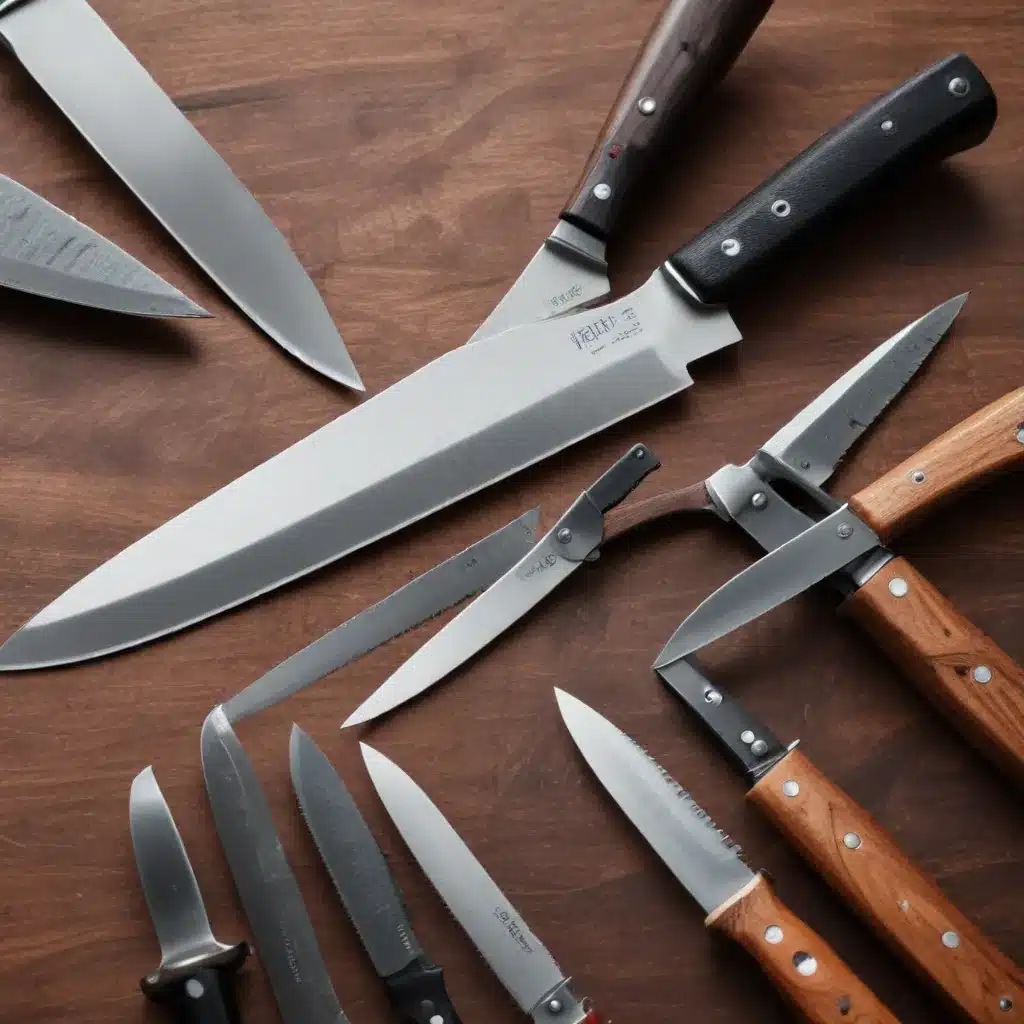
As a seasoned culinary professional, I’m thrilled to share my in-depth insights on one of the most critical tools in any kitchen – the knife. In this comprehensive guide, we’ll delve into the essential principles of knife care and sharpening, empowering you to maintain a razor-sharp edge and get the most out of your blades.
Understanding Knife Anatomy and Types
Before we dive into sharpening techniques, it’s crucial to familiarize ourselves with the basic anatomy of a knife. The blade, tang, and handle are the three primary components that make up a knife. The blade is the sharp, cutting edge, while the tang extends from the blade into the handle, providing strength and balance. The handle is the part you grip, and its design can vary greatly depending on the knife’s intended use.
Knives come in a wide array of shapes and sizes, each designed for specific culinary tasks. From the classic chef’s knife to the nimble paring knife, understanding the unique characteristics of different knife types will help you select the right tool for the job. For example, a serrated bread knife is ideal for slicing through crusty loaves, while a boning knife’s flexible blade excels at separating meat from the bone.
Maintaining Knife Sharpness: Honing and Sharpening
Keeping your knives sharp is essential for both efficiency and safety in the kitchen. The two primary methods for maintaining a keen edge are honing and sharpening.
Honing
Honing is the process of realigning the microscopic teeth on the knife’s edge, restoring its sharpness without removing any metal. This should be done regularly, even if your knife still feels reasonably sharp. A honing steel or rod is the tool of choice for this task, and it’s important to use the proper technique to avoid damaging the blade.
Sharpening
While honing helps maintain the edge, sharpening is necessary to remove any nicks or damage and restore the blade’s original sharpness. This process involves grinding down the metal to create a fresh, razor-sharp edge. There are several sharpening methods, including using a whetstone, electric sharpener, or even a simple sharpening steel.
When sharpening your knives, it’s crucial to understand the appropriate angle for each blade type. A chef’s knife, for instance, typically requires a 20-22 degree angle, while a paring knife may need a slightly steeper 15-18 degree angle. Consulting manufacturer guidelines or seeking advice from experienced cooks can help ensure you’re sharpening your blades correctly.
Proper Knife Storage and Handling
Ensuring proper storage and handling of your knives is just as important as keeping them sharp. Storing knives in a safe, secure manner, such as in a knife block or magnetic strip, can prevent accidental damage or injury. When using your knives, always employ a firm, controlled grip and keep your fingers tucked away from the blade.
Additionally, it’s wise to invest in a high-quality cutting board that won’t dull your blades prematurely. Wooden or plastic boards are generally preferable to glass or stone surfaces, which can be harder on your knives.
The Importance of Knife Maintenance
Regularly maintaining your knives is essential for preserving their performance and longevity. This includes cleaning them after each use, wiping them down with a soft, damp cloth, and storing them in a dry place. Avoid submerging knives in water, as this can cause the blade to rust or the handle to become damaged over time.
By taking the time to properly care for your knives, you’ll not only ensure they remain sharp and effective, but you’ll also extend their lifespan and get the most value out of your investment.
Sharpening Techniques: Whetstone and Electric Sharpener
When it comes to sharpening, there are two primary methods worth exploring: the traditional whetstone and the modern electric sharpener.
Whetstone Sharpening
Using a whetstone, also known as a sharpening stone, is a time-honored technique that allows you to meticulously control the sharpening process. Whetstones come in varying grits, from coarse to fine, allowing you to first reshape the blade and then hone it to a razor-sharp edge. Mastering the proper whetstone technique takes practice, but the results are well worth the effort.
Electric Sharpener
For those seeking a more convenient option, an electric sharpener can be a game-changer. These devices automate the sharpening process, guiding your knife through the perfect angle and removing material efficiently. While they may not offer the same level of precision as a whetstone, electric sharpeners are a great choice for busy home cooks who want to maintain their blades with minimal effort.
Regardless of the method you choose, the key is to develop a consistent sharpening routine that works for your needs and skill level. Regularly maintaining your knives will ensure they always perform at their best, making meal preparation a breeze.
Mastering Knife Skills: Cutting Techniques and Safety
Pairing your sharp, well-maintained knives with proper cutting techniques is the ultimate recipe for kitchen success. From the classic chef’s knife chop to the precision of the julienne cut, developing your knife skills can dramatically improve your cooking efficiency and the quality of your dishes.
As you hone your knife skills, always prioritize safety. Keep your fingers curled inward, use a stable cutting board, and be mindful of your movements. Proper hand positioning and a firm, controlled grip are essential for avoiding accidents.
Conclusion: Elevate Your Culinary Prowess with Sharp Knives
In the world of cooking, a sharp, well-cared-for knife is an invaluable asset. By mastering the art of blade maintenance and sharpening, you’ll unlock a new level of culinary prowess, allowing you to tackle any kitchen task with ease and precision.
Remember, maintaining your knives is an ongoing process, but the rewards are immeasurable. Sharpen with confidence, cut with precision, and let your culinary journey reach new heights. For more tips and resources, be sure to explore the Kitchen Warrior blog for a wealth of practical advice and culinary inspiration.


